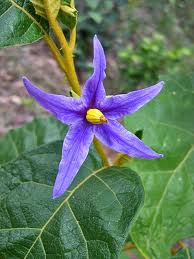Some plants accumulate Vitamin D3 or active Vitamin D3 (calcitriol)
Vitamin D in Nature: A Product of Synthesis and/or Degradation of Cell Membrane Components.
Biochemistry (Mosc). 2018 Nov;83(11):1350-1357. doi: 10.1134/S0006297918110056.
Göring H Göring Consulting, Berlin, 12555, Germany. horst-goering@online.de.
 Calcitriol: items in VitaminDWiki
* Active vitamin D appears to treat cancer – more studies needed – June 2018
* Genes which regulate active vitamin D worsen with age – Oct 2016
* Reminder - Vitamin D blood tests ignore the active form
Calcitriol: items in VitaminDWiki
* Active vitamin D appears to treat cancer – more studies needed – June 2018
* Genes which regulate active vitamin D worsen with age – Oct 2016
* Reminder - Vitamin D blood tests ignore the active form
📄 Download the PDF from Sci-Hub via VitaminDWiki
The review discusses the data on vitamin D accumulation in animals, plants, and other organisms. 7-Dehydrocholesterol (7-DHC) and ergosterol are considered to be the only true precursors of vitamin D, although even vitamin D2 (ergocalciferol) is not fully comparable to vitamin D3 (cholecalciferol) in regard to their functions. These precursors are converted by UV radiation into the corresponding D vitamins. There are a few published reports that this reaction can also occur in the dark or under blue light, which is unexpected and requires explanation. Another unexpected result is conversion of pro-vitamins D (7-DHC and ergosterol) into vitamin D3 and D2 via pre-vitamin D at low temperatures (<16°C) in the lichen Cladonia rangiferina. An extensive survey of literature data leads to the conclusion that vitamin D is synthesized from (1) 7-DHC via lanosterol (D3) in land animals; (2) 7-DHC via cycloartenol (D3) in plants; (3) ergosterol via lanosterol (D2) in fungi; and (4) 7-DHC or ergosterol (D3 or D2) in algae. Vitamin D primarily accumulates in organisms, in which it acts as a pro-hormone, e.g., land animals. It can also be found as a degradation product in many other species, in which spontaneous conversion of some membrane sterols upon UV irradiation leads to the formation of vitamins D3 or D2, even if they are not necessarily needed by the organism. Such products accumulate due to the absence of metabolizing enzymes, e.g., in algae, fungi, or lichens. Other organisms (e.g., zooplankton and fish) receive vitamins D with food; in this case, vitamins D do not seem to carry out biological functions; they are not metabolized but stored in cells. A few exceptions were found: the rainbow trout and at least four plant species that accumulate active hormone calcitriol (but not vitamin D) in relatively high amounts. As a result, these plants are very toxic for grazing animals (cause enzootic calcinosis). In connection with the proposal of some scientists to produce large quantities of vitamin D with the help of plants, the accumulation of calcitriol in some plants is discussed.
A few items from the PDF
The concentrations of vitamin D3 in reindeer lichen ~ 4,000 IU per 100 g
"The following plants contain vitamin D3 and its metabolites, including calcitriol, in relatively large amounts:
- Solanum malacoxylon,
- Lycopersicon esculentum
- S. tuberosum
- S. melongena
- Cucurbita pepo subsp. pepoconvar. giromontina
- S. glaucophyllum (plants and cell culture)
- Nicotiana glauca
- Cestrum diurnum
- Trisetum flavescens
